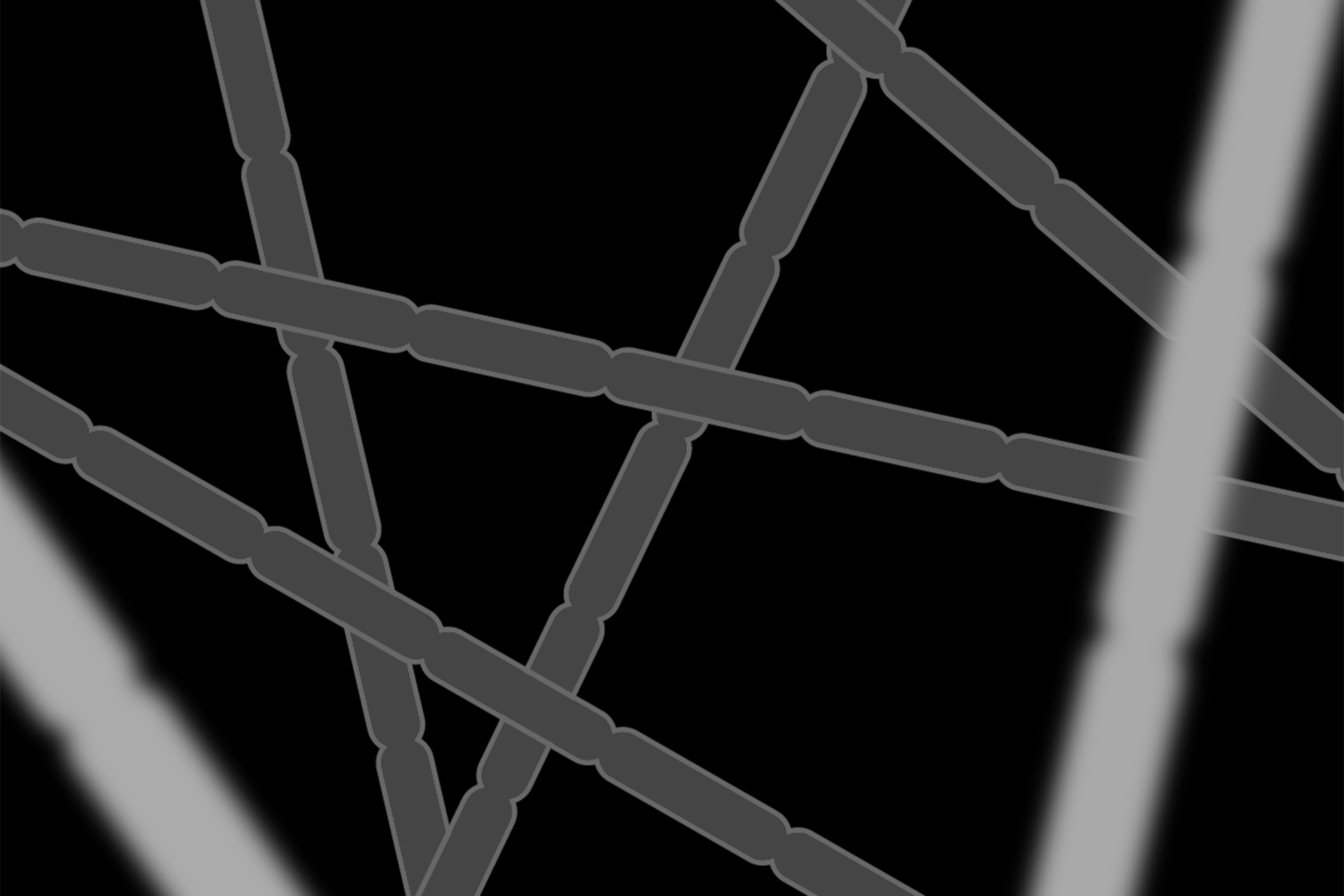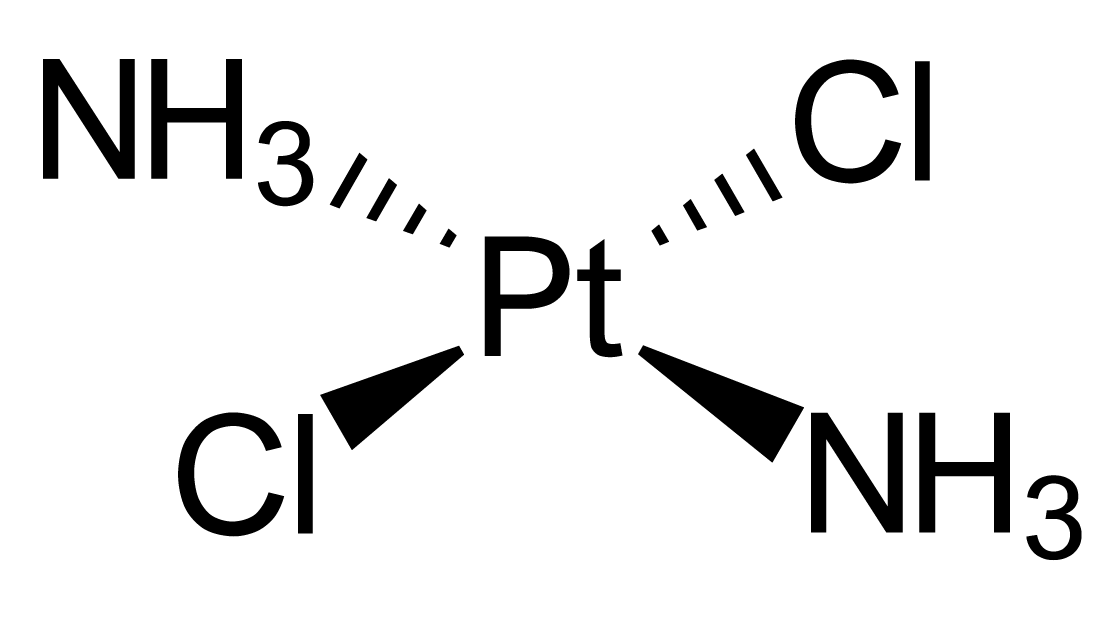A Lucky Strike: Rediscovery of an Anti-Cancer Drug by Barnett Rosenberg
By Daria Zaitseva

Some scientific discoveries would not happen if it was not for luck. An apple falling next to Newton led to the notion of gravitation [1]; Roentgen’s investigation into the mysteriously glowing little screen in his laboratory resulted in the discovery of X-ray [2]. Serendipitous discoveries are never lacking in the history of science. This article reveals yet another unintentional but life-saving discovery, or more precisely – the rediscovery of cisplatin by Barnett Rosenberg.
Rosenberg graduated from Brooklyn College with a bachelor’s degree in physics in 1948, and obtained his master’s and doctorate degrees in physics from New York University in 1950 and 1955 respectively [3]. Being trained as a physicist allowed him to come up with insights that may not be obvious to biologists: He noticed how the mitotic spindle in a dividing cell look like the electric field lines between two opposite charges (or the magnetic field lines between two opposite poles) (Figure 1). Is it just a coincidence? Or does electromagnetism have to do with cell division?

Figure 1 A dividing cell with chromosomes attached to the mitotic spindle (left) and the electric field lines between two opposite charges (right).
In 1965, Rosenberg tested his unusual idea on the bacteria Escherichia coli [4, 5], although it did not rely on the formation of mitotic spindle for cell division. Using platinum electrodes which were supposed to be both biologically and chemically inert, he sent a current through the bacterial solution containing ammonium chloride as a pH buffer [6]. Whatever his predictions had been, the results were simply mind-blowing. The microorganisms did not divide faster; instead, they stretched as if they wanted to divide but failed to do so. Their length increased up to 300 times compared to their normal size [7]! So, Rosenberg thought the current did affect cell division.
Nevertheless, this is not true. Over the next two years, Rosenberg found that it was not the electricity that stopped the cell division, but the chemical compound cisplatin (Figure 2) produced in the reaction [4, 5]. Cisplatin had already been discovered by the Italian chemist Michele Peyrone in 1854, but was not studied much until Rosenberg’s rediscovery [4]. Together with many new substances which had the ability to inhibit cell proliferation, cisplatin was considered as a drug candidate for chemotherapy [4].

Figure 2 Chemical structure of cisplatin.
In 1969, Rosenberg’s lab published the promising results on the antitumor property of cisplatin in mice [3, 8]. Then clinical trials followed. At first, it caused a public shock as heavy metal compounds were believed to be extremely toxic [4, 5]. Despite so, cisplatin turned out to be effective for many types of cancer when used in combination with other medications [4], especially for testicular cancer which had no known effective drug at that time [9]. In 1978, cisplatin was approved by the Food and Drug Administration (FDA) in the US, followed by other countries [4]. It remains as one of the key medicines for cancer treatment today [10].
Modern research shed light on how cisplatin works. Cisplatin inhibits DNA replication mainly by “tying” (or, forming crosslinks between) two purine bases (adenine and guanine) on the same strand together [11, 12], which eventually leads to failure in cell division and apoptotic cell death [11]. From the non-specific mode of action of cisplatin, it can also harm actively dividing cells in normal tissues, such as the intestine, thus causing severe side effects [13]. This partly explains why researchers were looking for new generations of platinum-based drugs. Notably, carboplatin entered the market in 1989 with a much lower systemic toxicity [5, 13, 14], and oxaliplatin was approved in 1994 with a high efficacy against colon cancer [5, 14]. Thanks to the Rosenberg’s serendipitous rediscovery, an array of platinum-based drugs was made available and saved the lives of many cancer patients.
The rediscovery of cisplatin was an extremely lucky combination of events. Yet, it was also the open mindset and curiosity of Rosenberg that brought this fundamental discovery to all of us. The story of cisplatin also serves as a reminder of how multiple scientific fields can powerfully intertwine, as there is no actual boundary between chemistry, physics and biology.
Chance favors only the prepared mind. Was it luck or a good grip? You decide for yourselves.
|
Fun fact: Is there transplatin? Yes, it is a stereoisomer of cisplatin with no anti-tumor activity [4].
Transplatin |
References
[1] Gefter, A. (2010, January 18). Newton's apple: The real story. New Scientist. https://www.newscientist.com/article/2170052-newtons-apple-the-real-story/
[2] This Month in Physics History – November 8, 1895: Roentgen's Discovery of X-Rays. (2001, November). APS News, 10(10), 2.
[3] Hoeschele, J. D. (2014). Biography of Professor Barnett Rosenberg: A Tribute to His Life and His Achievements. Anticancer Research, 34(1), 417–421.
[4] Barnett Rosenberg i ego schastlivyj sluchaj [Barnett Rosenberg and his lucky case]. (2021). Kvantik, 6. https://elementy.ru/nauchno-populyarnaya_biblioteka/436262/Barnett_Rozenberg_i_ego_schastlivyy_sluchay
[5] National Cancer Institute. (2014, May 30). The "Accidental" Cure—Platinum-based Treatment for Cancer: The Discovery of Cisplatin. https://www.cancer.gov/research/progress/discovery/cisplatin
[6] Department of Chemistry, College of Natural Science, Michigan State University. (n.d.). Barney Rosenberg. https://www.chemistry.msu.edu/faculty-research/portraits/rosenberg-barney.aspx
[7] Rosenberg, B., Van Camp, L., & Krigas, T. (1965). Inhibition of Cell Division in Escherichia coli by Electrolysis Products from a Platinum Electrode. Nature, 205(4972), 698–699. https://doi.org/10.1038/205698a0
[8] Rosenberg, B., Van Camp, L., Trosko, J. E., & Mansour, V. H. (1969). Platinum Compounds: a New Class of Potent Antitumour Agents. Nature, 222(5191), 385–386. https://doi.org/10.1038/222385a0
[9] In remembrance of Barnett Rosenberg. (2009). Dalton Transactions, (48), 10648–10650. https://doi.org/10.1039/B918993A
[10] Gandin, V., Hoeschele, J. D., & Margiotta, N. (2023). Special Issue "Cisplatin in Cancer Therapy: Molecular Mechanisms of Action 3.0". International Journal of Molecular Sciences, 24(9), 7917. https://doi.org/10.3390/ijms24097917
[11] Tchounwou, P. B., Dasari, S., Noubissi, F. K., Ray, P., & Kumar, S. (2021). Advances in Our Understanding of the Molecular Mechanisms of Action of Cisplatin in Cancer Therapy. Journal of Experimental Pharmacology, 13, 303–328. https://doi.org/10.2147/JEP.S267383
[12] Imai, R., Komeda, S., Shimura, M., Tamura, S., Matsuyama, S., Nishimura, K., Rogge, R., Matsunaga, A., Hiratani, I., Takata, H., Uemura, M., Iida, Y., Yoshikawa, Y., Hansen, J. C., Yamauchi, K., Kanemaki, M. T., & Maeshima, K. (2016). Chromatin folding and DNA replication inhibition mediated by a highly antitumor-active tetrazolato-bridged dinuclear platinum(II) complex. Scientific Reports, 6. https://doi.org/10.1038/srep24712
[13] Zhang, C., Xu, C., Gao, X., & Yao, Q. (2022). Platinum-based drugs for cancer therapy and anti-tumor strategies. Theranostics, 12(5), 2115–2132. https://doi.org/10.7150/thno.69424
[14] Monneret, C. (2011). Platinum anticancer drugs. From serendipity to rational design. Annales Pharmaceutiques Françaises, 69(6), 286–295. https://doi.org/10.1016/j.pharma.2011.10.001
